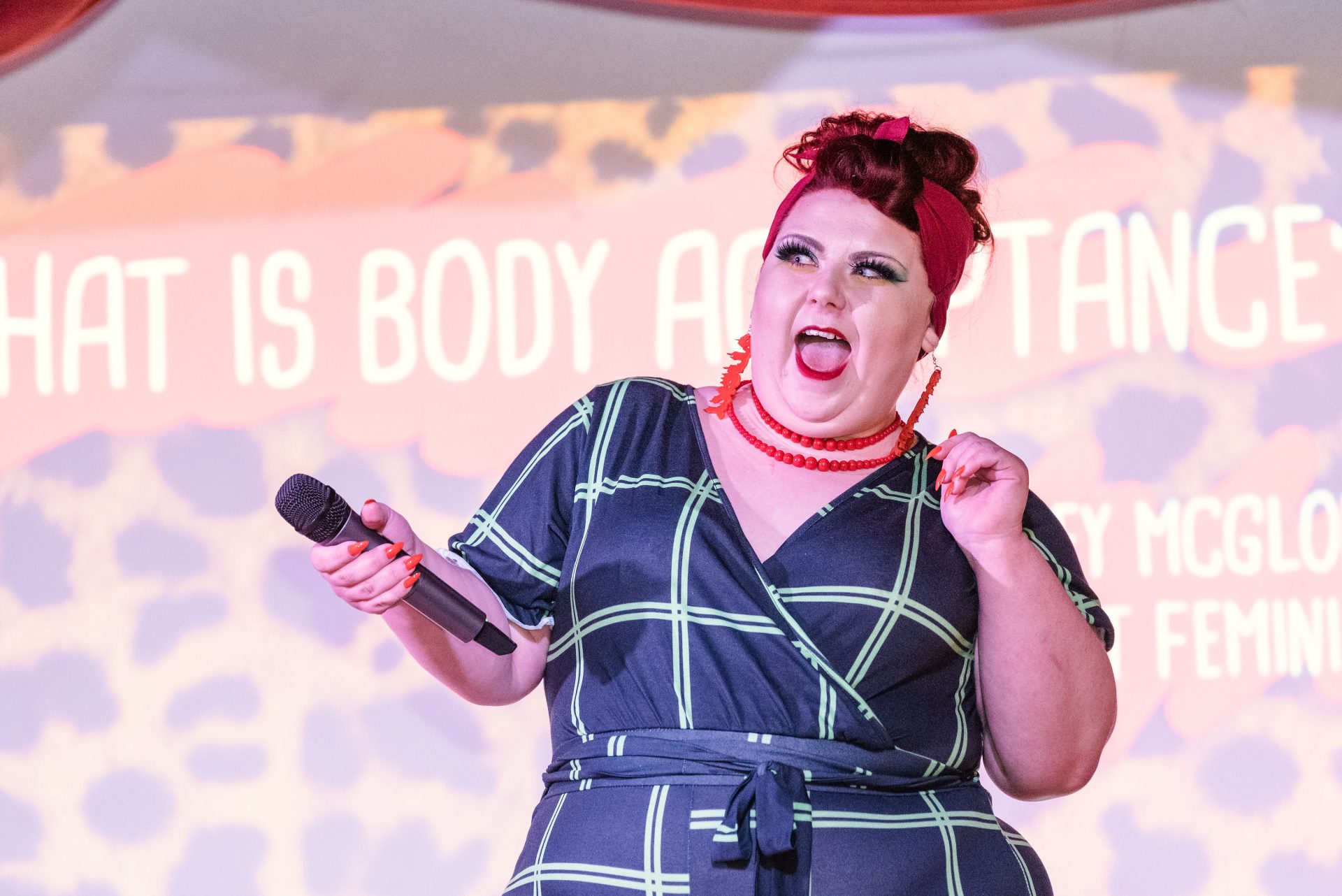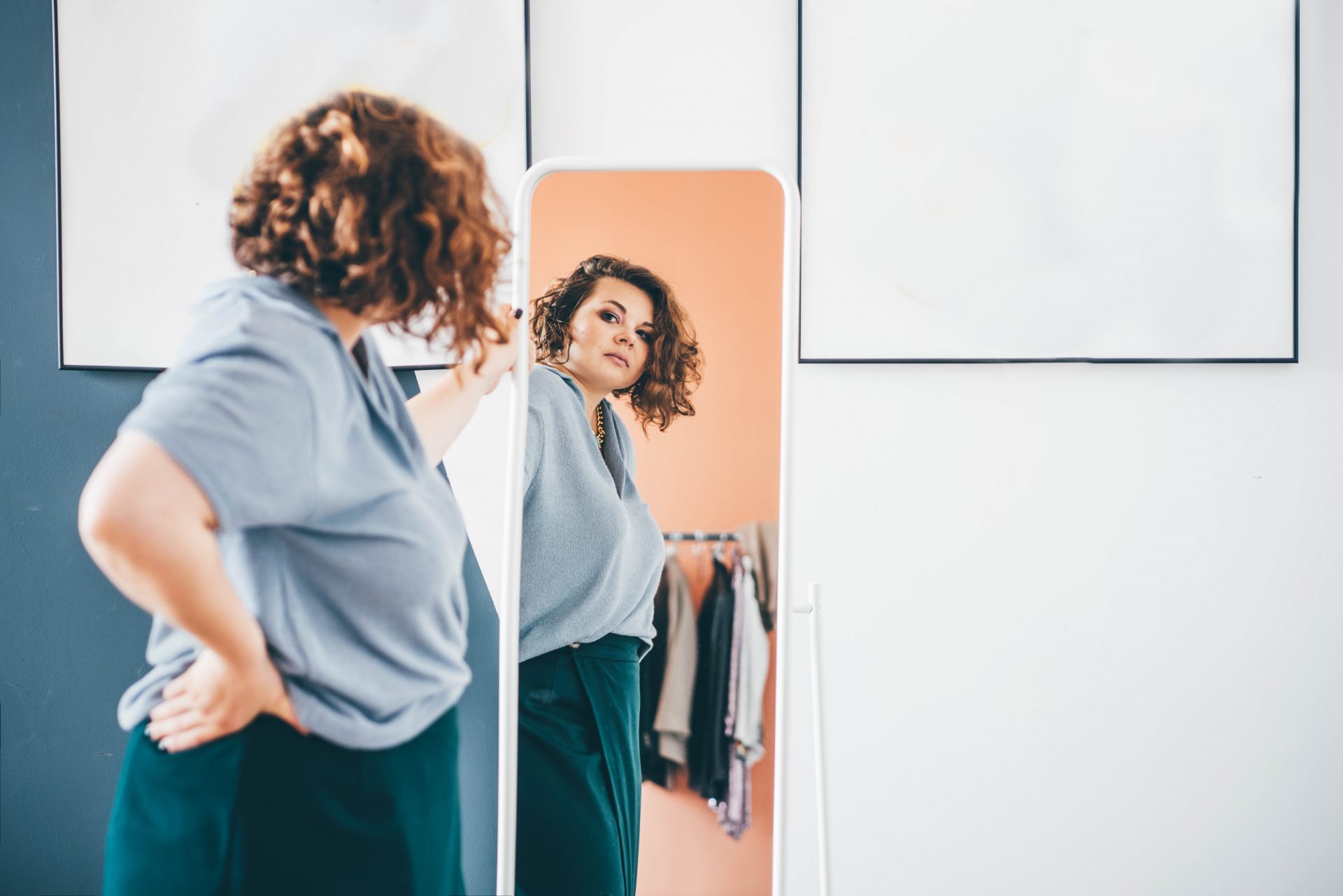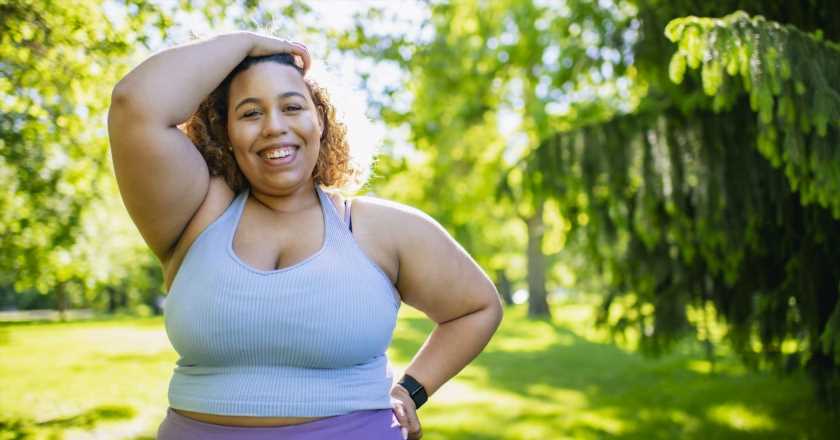In 2012, as influencer culture began to take hold, the third wave of the body positivity movement ripped, curled, and broke on social media. But has it achieved its mission?
How did you feel about your body 10 years ago? Back then, I was working at a lads’ mag, surrounded by pictures of women in bikinis with zero body fat and miraculously big boobs. For the purposes of selling magazines, they all had a body type that was deemed desirable by men – before you ask why I didn’t go and work at the women’s mags downstairs, their Circles Of Shame were hardly much better. Don’t get me wrong, I loved my job and the people I worked with, but unconsciously or not, the messaging crept in.
Working at the time as a social media editor, I was already on Instagram, and it wasn’t long before the body positivity movement found its way to me.
I scrolled, followed, and filled my feed with these new “influencers”, who were building communities by creating space for and celebrating marginalised bodies. It was a detoxifying antidote to my day job – an un-brainwashing. I consumed as much of it as I could.
You may also like
Stephanie Yeboah: “Why the body positivity movement is crucial for Black women”
Years later, while recovering from RED-S (relative energy disorder in sport), I found myself returning to Instagram and the #bodypositivity community once again to undo a lot of toxic thoughts.
What is the body positivity movement?
The body positivity movement began life as the Fat Acceptance movement in 1969, when fat, queer, Black women went about creating their own body positivity movement after mainstream fat activists shut out people of colour. And in 2012, the third wave of the movement found its way to Instagram.
To date, the hashtag #bodypositive has 18.4M tags on Instagram and #bodypositivity has amassed an enormous 23.7 billion views on TikTok. An entire global community has been built with the help of influencers like talk show host and motivational speaker Brandee J. Around the same time the hashtag was taking off, Brandee launched a boutique for curvy, Black women which she then turned into an entire movement.
“At that time,” she tells Stylist, “I was at my biggest and I just felt there wasn’t a community that represented me, that represented curvy women of colour. At the same time, the industry told me I wasn’t plus size enough.
“So, I started to influence people in a different way by telling my story, about my childhood where my dad called me Miss Piggy, my suicide attempts as a teenager because I didn’t know how to handle being curvy. I talked about the root of being a curvy Black woman in America, because no one really talks about that.”
Exposure to body positive content improves our own mood and confidence
Brandee regularly receives messages from women, and sometimes men, thanking her for her transparency in the content she puts out. As research has proven, exposure to body positive content really does make us feel better. One 2019 study with a group of young women showed that brief exposure to body positive posts was associated with improvements in their positive mood, body satisfaction and body appreciation, relative to thin-ideal and appearance-neutral posts.
It fosters respect – especially towards those living on the margins
For activist, speaker and burlesque performer Lindsay McGlone, engaging with the body positivity community was “one of the best things” she ever did after being bullied throughout secondary school for being fat.
“Body positivity is so much more than how we see ourselves,” she explains. “If you practice it in its truest form, it’s about individuals respecting and celebrating bodies of all kinds, especially those who are seen to be marginalised by society. I continued the love for the movement because I saw that I could advocate for myself and others whilst exploring my own body.”
Has the BoPo movement become less intersectional?
However, despite the efforts of people like Brandee and Lindsay, the movement today appears to actually lack the intersectional representation it was created for. Just click on the hashtag, which I’d bet you haven’t in a while.
An analysis of 246 body positive Instagram posts found that only 43% actually depicted larger bodies and that 67% featured white women. Considering the body positivity movement was originally formed by a group of fat, queer, Black women in the 1960s, this 21st century version is notably whitewashed.
“It’s true,” says Brandee. “I do feel like there’s not enough representation on social media, of people who look like me.”
“It’s a two-sided thing,” she continues. “If you see a curvy black woman loving herself, society wants to find something wrong. But they can see a bigger white woman doing the same thing and it’s like ‘oh my god, she’s amazing, she’s great.’
“Society doesn’t want to accept that it’s the black woman’s body that started this, so of course, you’re going to whitewash it to fit your narrative versus the truth. I feel like we still have a way to go.”
Lizzo echoed this sentiment in a Tik Tok last year, saying the movement has been “co-opted by all bodies.”
Both Lindsay and Brandee think the body positivity movement has also been diluted by those looking to make money from it. “The movement got to a point of popularity where everyone thought they were a plus-sized influencer and they were just looking to make a buck,” says Brandee. “ I’m not in it to make money; I made more money in my full-time job. It’s about helping women love themselves. There’s no point trying to sell them something to wear if they’re not feeling good on the inside.”
Has body positivity been co-opted by smaller, whiter people?
Lindsay tells us that she briefly stepped away from the movement, feeling that it was too focused on people who, she argued, didn’t need it as much as herself and others.
“Influencers who do not actually understand the movement or centre it around themselves and are not in a marginalised group, are the people who are making the movement feel unrealistic and toxic,” she says. “If a person who is not seen as othered in society is talking about body positivity, it feels unrealistic and just not quite right. For me, advocating for other bodies is what is essential for body positivity.”

Bex, 28, originally started engaging with the body positivity community while recovering from an eating disorder. “To begin with, it was a great thing to see,” she tells Stylist. “However, a lot of straight-sized bodies are taking up space in the movement right now.
“I do think it’s important to see straight-sized bodies [but it’s also important to know that] you have a body that can be catered for in most shops, a body that is taken seriously by medical professionals, [and that’s] not the same experience as those with fat bodies who have to fight for all of this.”
Bex decided to spend some time unfollowing Instagram accounts and “fine-tuning” her ad targeting to protect her mental health.
Mental health and unrealistic body standards
That’s a good idea. A recent study by OriGym found that almost two in five Brits have said that not being able to achieve the “picture perfect” body image affects their mental health. Chelsea Hudson, licensed therapist and executive director of Cityscape Counseling, says that over the past 10 years, her business has seen a steady increase in clients reaching out for counselling services due to poor body image. “They’re increasingly citing social media as being one of the biggest contributors,” she adds.
The same OriGym study also found that Love Island had made 25% of Gen Zs and nearly one in four 26-to-34-year-olds want to change their appearance.
Now, I didn’t watch Love Island this year but, thanks to Instagram, I didn’t have to. I could still tell you everyone that’s in it, because internet culture is pop culture. The #bodypositivity community is just one grain of sand. To look at how far we’ve come after 10 years of #bodypositivity means looking at the bigger picture.
Has anything changed in the 10 years since #bodypositivity started?
For Brandee, nothing has actually changed at all. “Except for more people getting butt lifts,” she says. That would, of course, be the Kardashian Effect, and the family have been on Instagram for as long as #BoPo. Even if you don’t follow any of them, their influence is undeniable. Kylie Jenner is the second most followed person on Instagram in the world after Cristiano Ronaldo, with 372 million followers.
The Kardashians top up their fortunes by selling products with the help of heavily edited photos. We know they do that, and in the business of beauty and fashion, that’s nothing new.
Remember when influencers (and the Kardashians) were all wearing waist trainers? Brandee stopped wearing them when a teenage girl messaged her saying she wanted to get one, to look like her, to be smaller. Brandee checked herself, realised her influence, and stopped – telling the girl she shouldn’t do that to her growing body. She didn’t see an opportunity to keep going, keep selling. Sadly, irrespective of where the body positivity movement goes next, being sold a “look” or “ideal” is not going to change any time soon.

For me, the #bodypositivity community is a bit of a crutch. It helps to dip in occasionally but it’s not the answer. The answer to cultivating a better, longer-lasting relationship with myself and my body is to look internally. It’s remembering that my feelings about my body are just feelings, not facts, and like all emotions, they are transient. So I’m more thoughtful about how I use social media — not just what I’m looking at, but what I’m putting out there and why.
“We know from the people we support that deciding whether or not to use social media while unwell or in recovery can be challenging,” Tom Quinn, Beat’s Director of External Affairs explains. “For some, engaging in recovery communities can lead to forming positive relationships and increasing support networks, but for others it can be a negative experience.
“There is unfortunately a huge amount of triggering and unhelpful content on social media platforms, and whilst it’s unlikely for someone to develop an eating disorder just by seeing online content, it could contribute to an eating disorder developing in somebody who is already vulnerable. It can also lead to people who are unwell engaging in dangerous eating disorder behaviours.
You may also like
Body positivity advocate Jessamyn Stanley on how to ace yoga, whatever your size
“If anybody is struggling with their social media usage,” says Quinn, “we’d encourage them to take a step away and focus on positive sources of support. We’d also recommend that anyone concerned about their health reaches out to their GP and ask for an urgent appointment.”
If you’re worried about your own or someone else’s health, you can contact Beat, the UK’s eating disorder charity, 365 days a year on 0808 801 0677 or beateatingdisorders.org.uk.
Images: Getty
Source: Read Full Article
